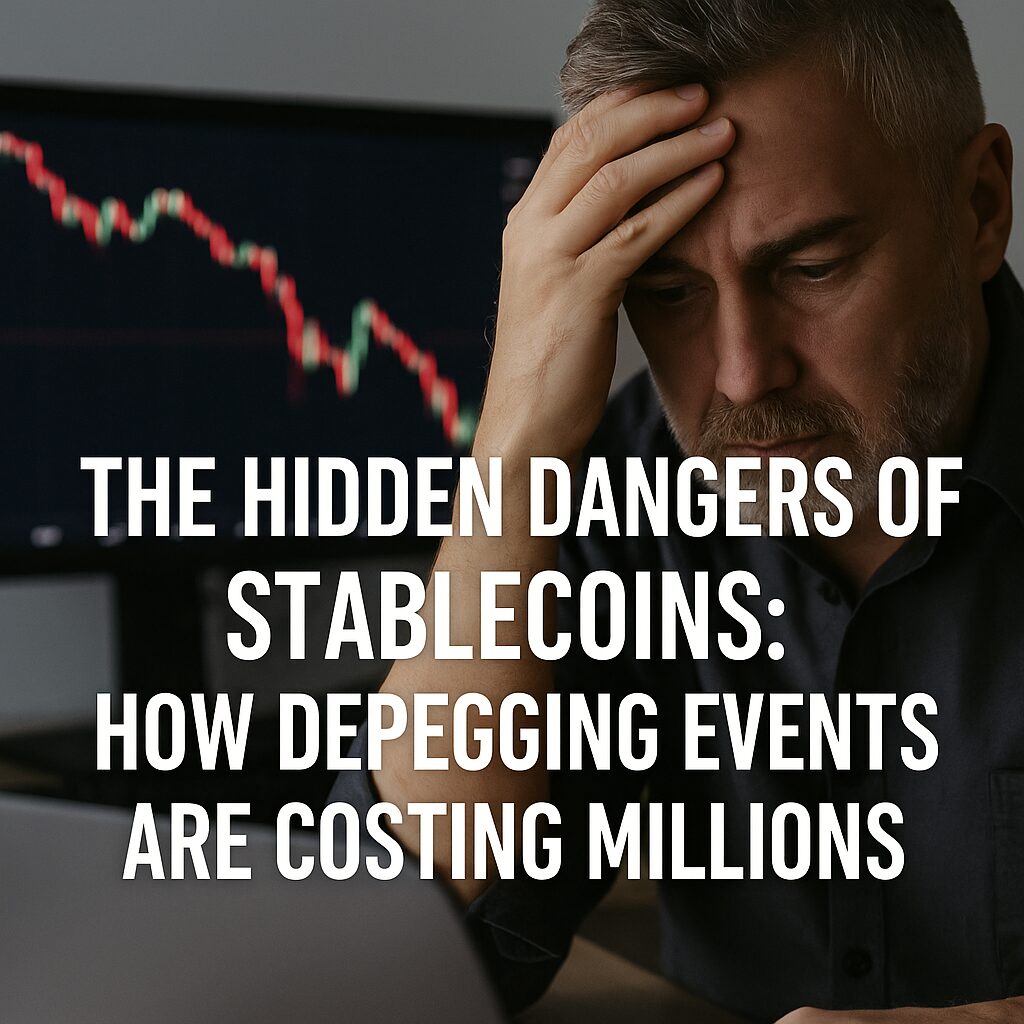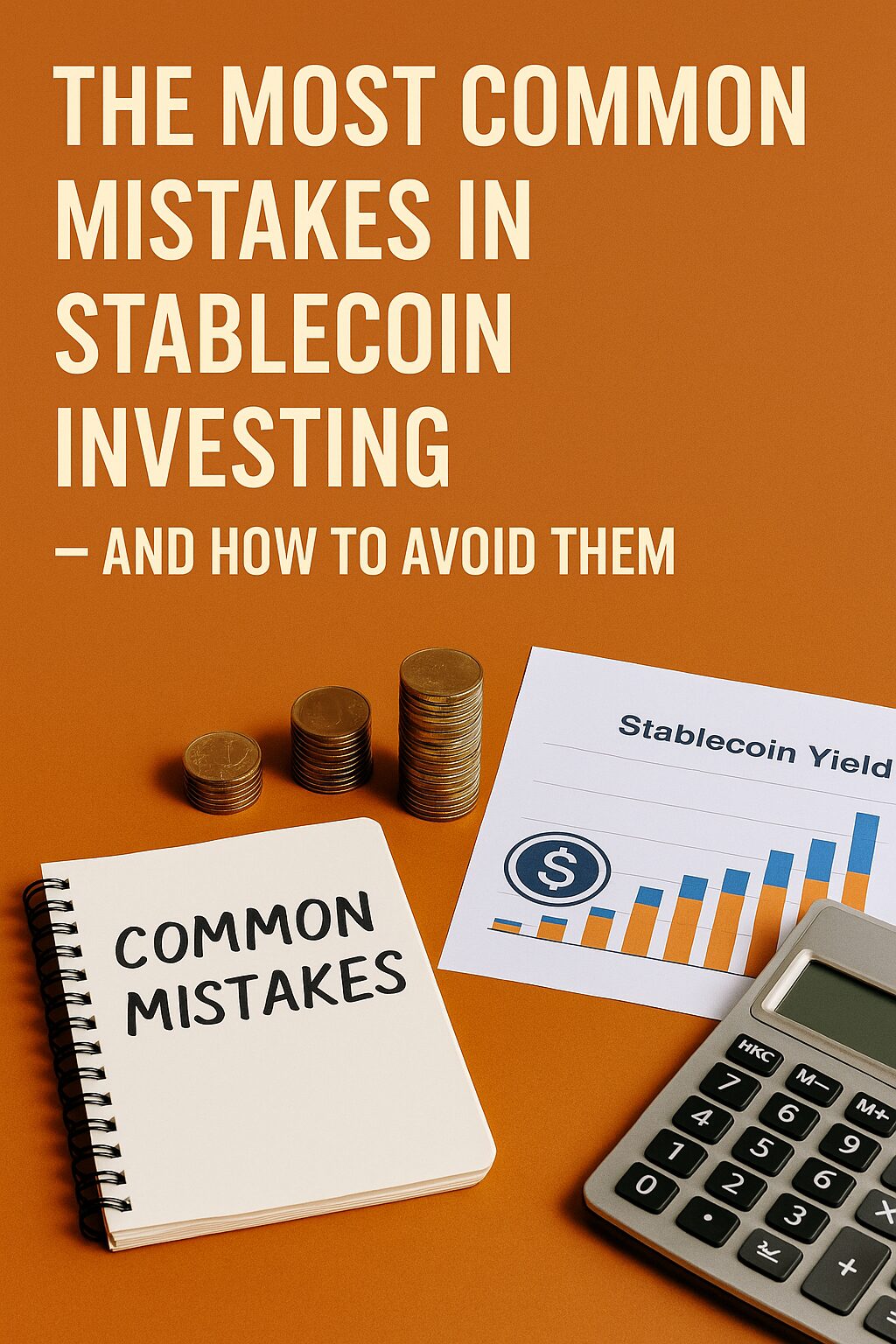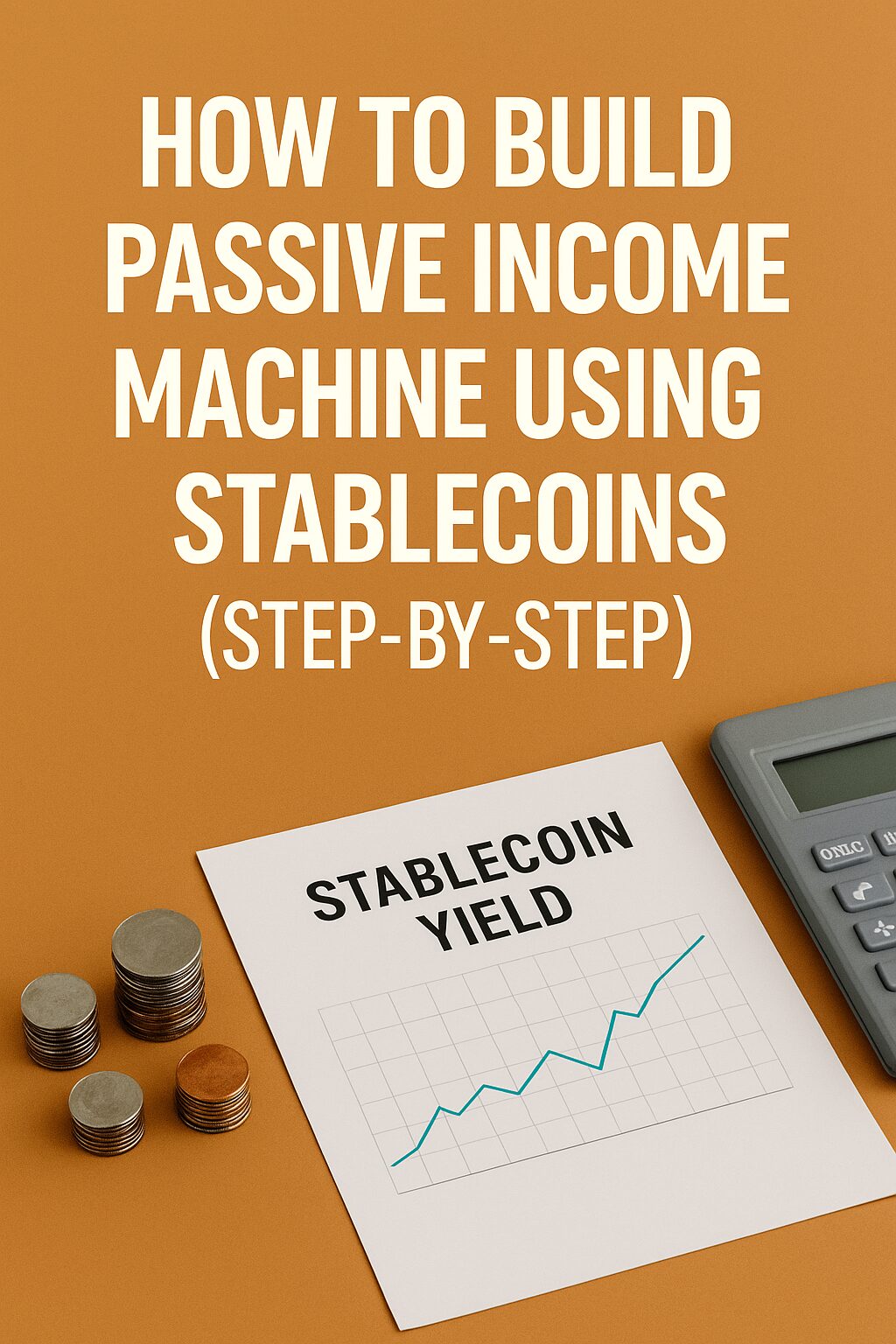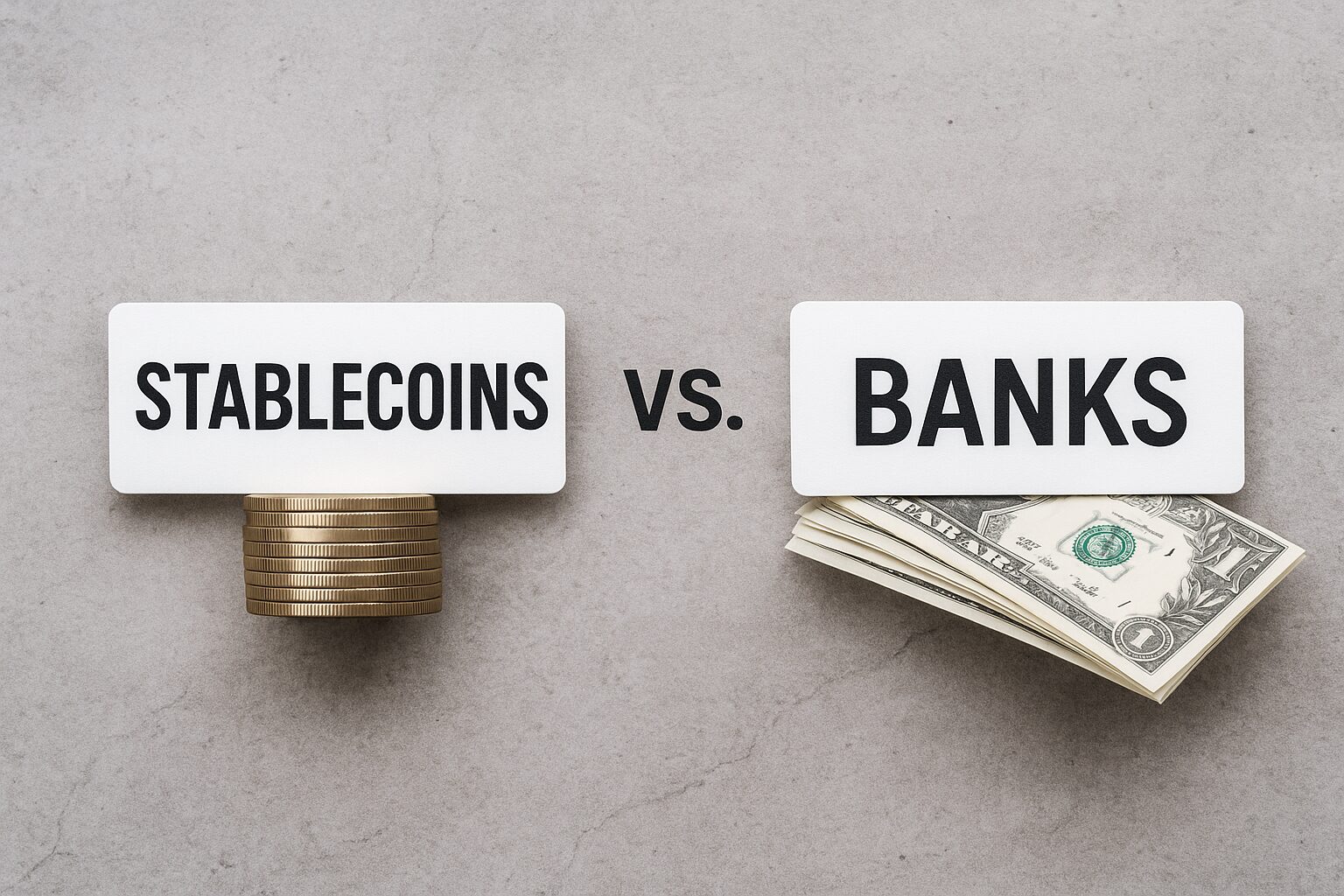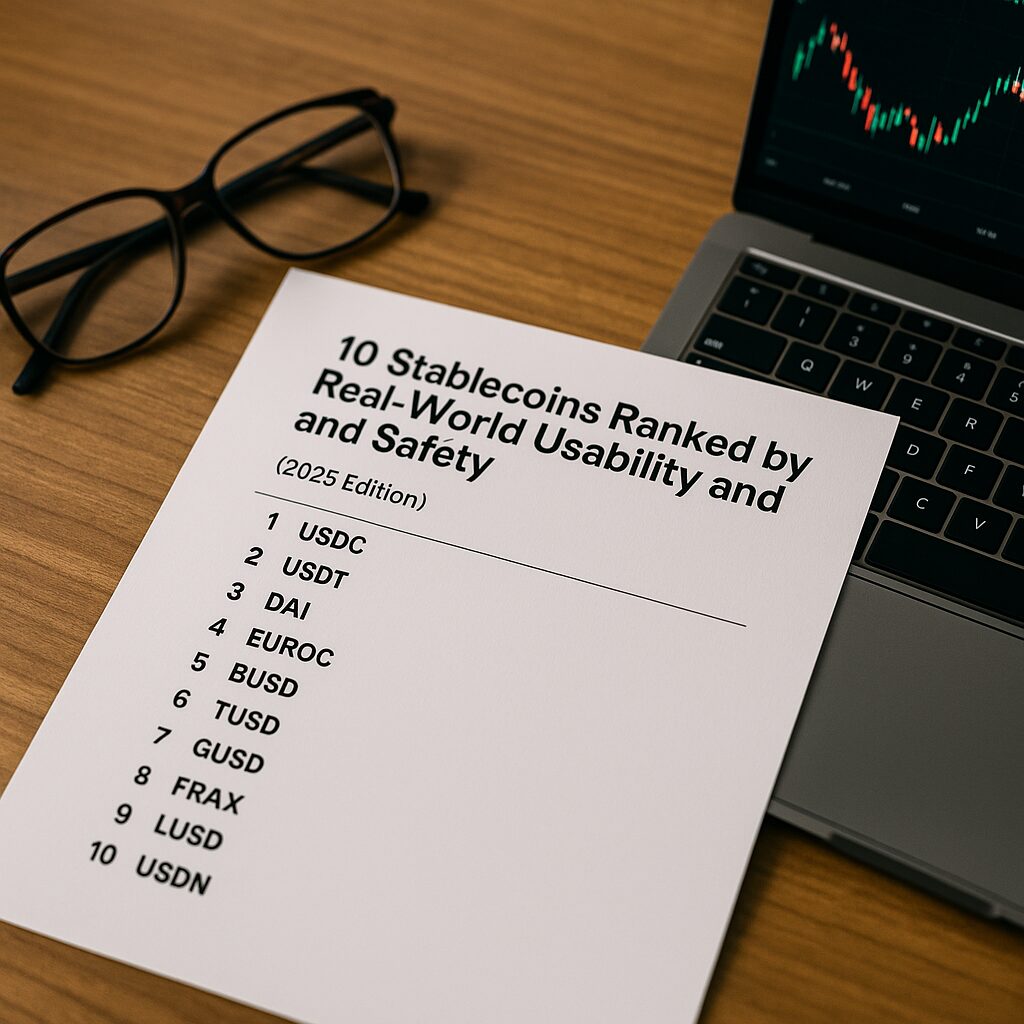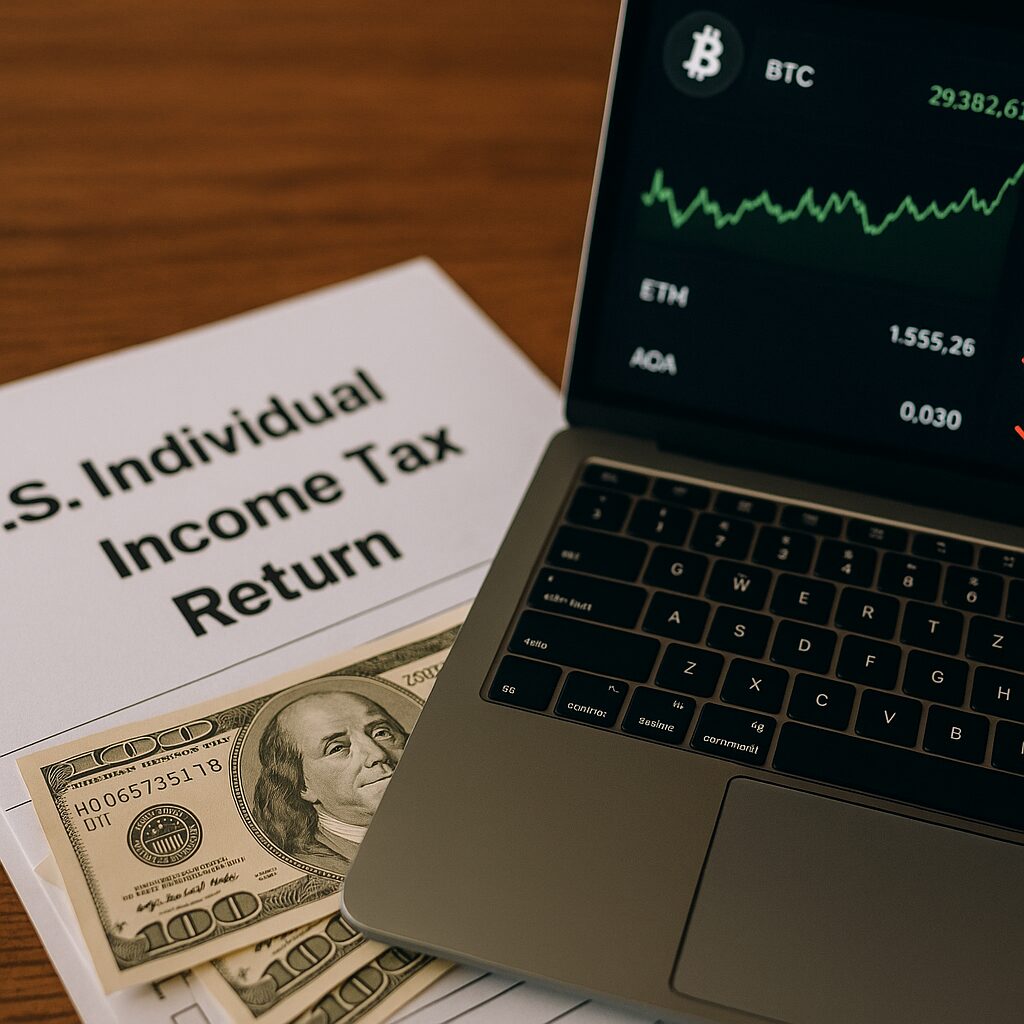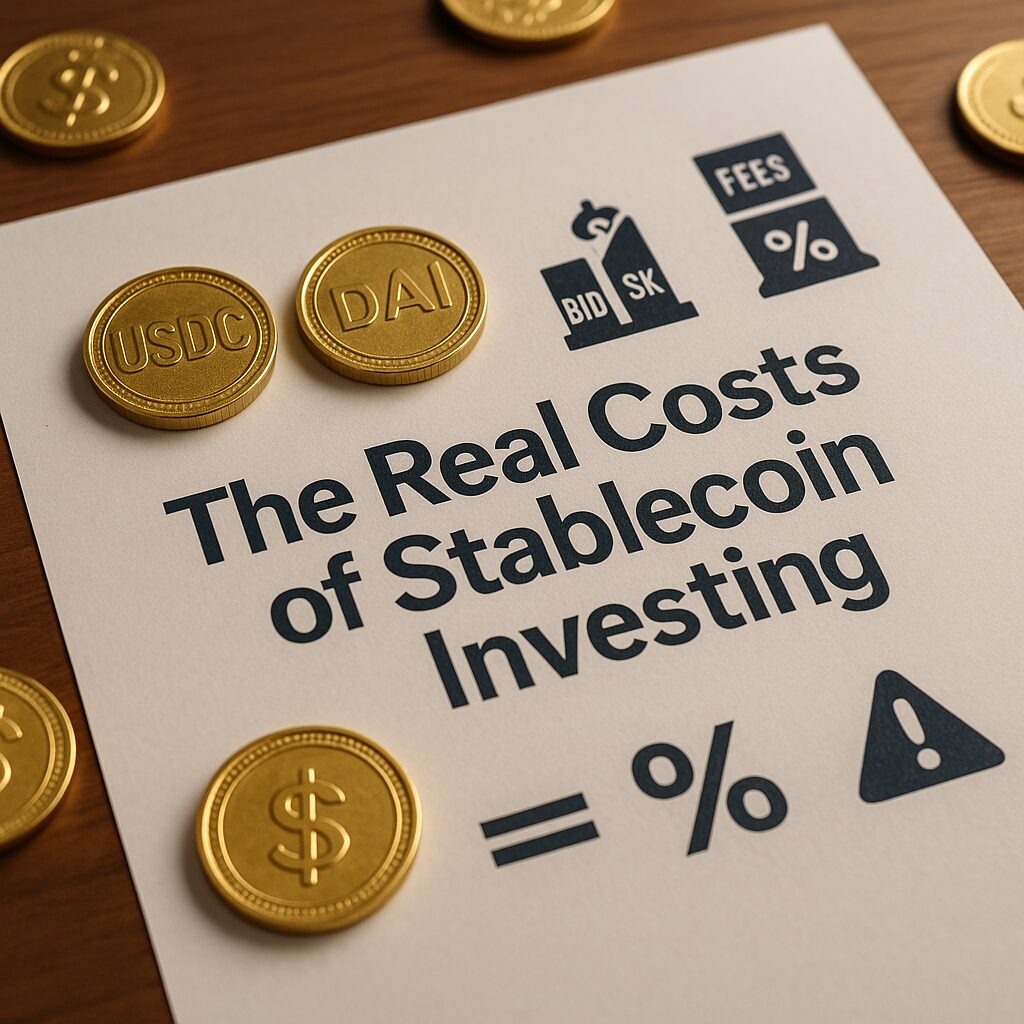Stablecoins have been sold as the “safe zone” of crypto investing—assets designed to stay pegged to the U.S. dollar and avoid the volatility of Bitcoin or Ethereum. But behind the calm surface lies a turbulent reality: stablecoins can fail, and when they do, the consequences are devastating.
This article will uncover how depegging events have triggered massive financial losses, why they happen, and how to protect yourself.
1. What Is Depegging?
A stablecoin is meant to maintain a 1:1 value with a real-world asset, usually the U.S. dollar.
Depegging refers to the moment when that value slips below (or above) the target price.
For example:
- USDC dropping to $0.92 in March 2023
- UST (TerraUSD) collapsing to under $0.01 in May 2022
Depegging means instability, and often panic-selling, that shatters investor trust.
2. Why Do Stablecoins Depeg?
(a) Poor Reserve Management
Many stablecoins claim they’re “fully backed,” but some use risky debt instruments or opaque accounting.
(b) Algorithmic Fragility
Unlike fiat-backed stablecoins like USDC or BUSD, algorithmic stablecoins rely on smart contracts and game theory. But once market confidence erodes, their structure collapses—fast.
(c) Banking or Regulatory Shock
When Silicon Valley Bank collapsed in 2023, Circle (issuer of USDC) revealed it had over $3 billion stuck in SVB. Result? USDC briefly lost its peg.
(d) Attack Vectors
Some stablecoins are targeted by short sellers or arbitrage attacks—especially those with low liquidity or unstable algorithms.
3. Case Study: The TerraUST Collapse
In 2022, UST (TerraUSD) was hailed as the future of decentralized stablecoins.
- Backed by an algorithm linked to LUNA
- Promised high APY yields on Anchor Protocol
- Market cap surged to $18+ billion
Then, in a single week, it all unraveled.
UST lost its peg. LUNA hyper-inflated.
$40 billion in value evaporated.
Thousands of investors were wiped out—some even lost life savings.
4. Who Got Hurt? Real Losses from Depegging
- Retail Investors: Many thought stablecoins were “risk-free.” They weren’t.
- Crypto Companies: Celsius, Voyager, and even hedge funds suffered losses or went bankrupt.
- Institutions: Some DeFi protocols and DAOs held large UST positions and lost community funds.
5. How to Spot a Risky Stablecoin
Ask yourself:
- Is it truly backed by fiat reserves?
- Is the reserve audited by a reputable firm?
- Does the issuer disclose holdings transparently?
- Is it widely accepted on regulated exchanges?
Red Flags:
- High APYs (too good to be true)
- Algorithm-based systems with low adoption
- Unknown or unaudited reserves
6. How to Protect Yourself
- Stick to regulated, fiat-backed stablecoins (e.g., USDC, USDP)
- Verify audit reports and transparency dashboards
- Avoid yield farming schemes that use unknown stablecoins
- Diversify your stablecoin exposure
- Follow real-time regulatory and issuer updates
7. Are Stablecoins Still Worth Using?
Yes—with caution.
Stablecoins can be powerful tools for:
- Cross-border payments
- Crypto trading without volatility
- Earning modest interest through regulated platforms
But they are not immune to collapse.
8. Final Thoughts
Stablecoins are often seen as boring, safe, and predictable.
But that’s exactly why people get blindsided when they depeg.
To succeed in the evolving world of crypto, investors must not only seek opportunity—but also respect risk. Understanding depegging, reserve structures, and red flags is no longer optional. It’s essential.
9. Why Fractional Reserve Stablecoins Are Riskier Than You Think
Many stablecoins operate on fractional reserves—holding only a portion of what they owe.
This works in calm markets, but during panic, even a 10% redemption spike can crash the system.
Tether (USDT), the biggest stablecoin, has faced multiple allegations of reserve opacity.
The danger? Moral hazard: issuers earn profit on user funds, but don’t ensure full backing.
10. The Insurance Problem: Why DeFi Can’t Protect You
Traditional banks offer deposit insurance. Stablecoins don’t.
Crypto-native insurers like Nexus Mutual exist—but lack funds and often exclude algorithmic collapses.
After the UST disaster, most affected users couldn’t claim anything.
DeFi lacks institutional-grade protection.
11. CBDCs: The Regulated Competitor to Stablecoins
Governments are now launching Central Bank Digital Currencies (CBDCs).
These offer:
- Government-backed reserves
- Full legal oversight
- Integrated KYC/AML protections
But they also raise issues:
- Surveillance
- Privacy loss
- Limited flexibility
The future? Possibly a hybrid system—private stablecoins + public CBDCs.
📌 Coming Up Next:
What Happens If Your Stablecoin Fails?
We’ll explore real-life stories of people who lost big—and what you can do to safeguard your funds before it’s too late.
